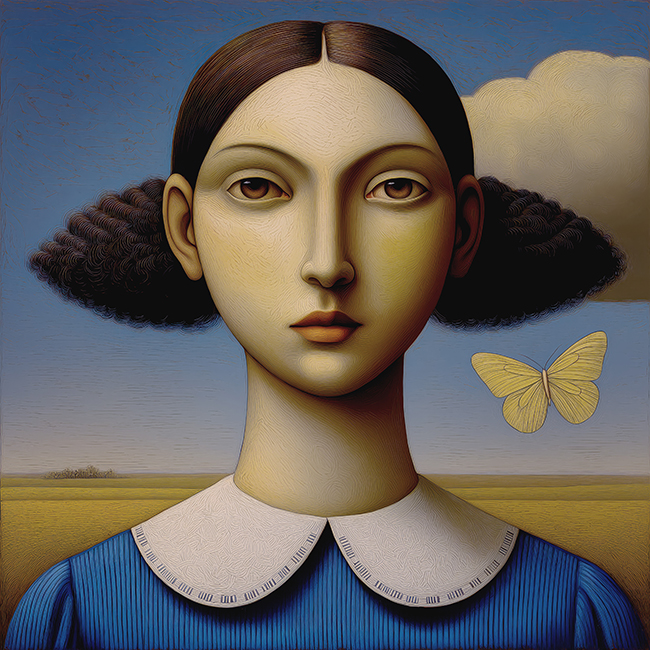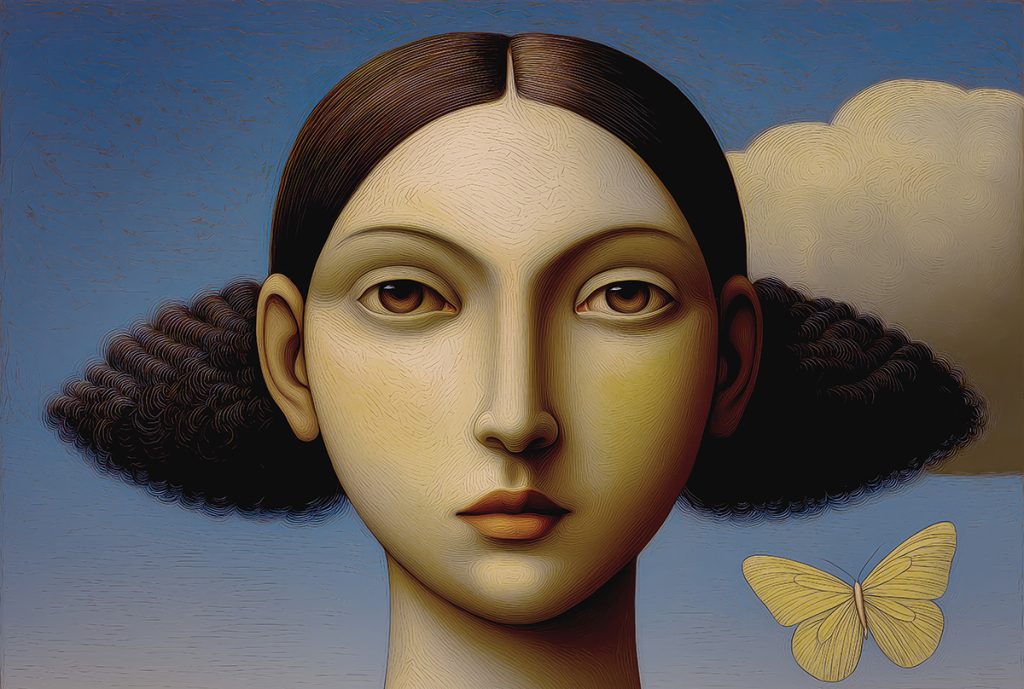Alan Brown’s artistic journey began in the hush of a darkroom. There, in the dim red light, he watched images surface out of nothing, pulled from silver grains suspended in emulsion. That quiet alchemy drew him in, and it has never let go. Photography was the doorway, but visual art became the path. Over the last forty years, Brown has followed that path with patience and determination.
With a BS in Communications from Syracuse University, majoring in Advertising Photography and minoring in Art History, he built a foundation that balanced craft with critical perspective. The work that followed has been wide-ranging, but always rooted in seeing—seeing not just surfaces, but the quiet undercurrents of form, light, and presence. Brown’s art does not shout. It invites. It lingers. It carries with it the echoes of that first darkroom moment, when vision and mystery first fused.

The Artwork: Stillness and Passage
A solitary figure rests within the frame, her presence understated yet insistent. The first impression is balance: elongated features framed by hair shaped with symmetrical care, a quiet geometry that steadies the composition. She does not demand the gaze, but she holds it. There is repose here, a pause that suspends time.
Color is the next language to emerge. The coolness of blue fabric crosses the warmth of gold tones, setting up a conversation between contrast and harmony. The blue grounds her, draping the figure in calm restraint, while the gold edges toward radiance, hinting at light breaking through. Within that conversation floats a butterfly—luminescent, fragile, yet impossibly central. The butterfly is not mere ornament; it is a hinge. It connects the human to the ephemeral, the steady body to the fleeting spirit. It is where weight meets lightness, where permanence brushes against passing.
Behind her, the background recedes into muted horizons. The landscape is not insistent. It does not crowd the figure. Instead, it breathes around her, soft lines stretching into distance, suggesting calm that extends beyond the canvas. This space carries echoes of her expression. Just as her gaze is unwavering yet gentle, the background holds its ground with a similar quiet. It is not a world in turmoil, nor one in ecstasy. It is one suspended between, a landscape of calm where mystery gathers but does not overwhelm.
Her face, elongated, recalls traditions where proportion is used less for realism than for emphasis. The elongation makes her presence less earthly, more archetype. She is not just a girl gazing forward. She is a symbol of the human held within the universal. Her eyes—forward, serene, unwavering—anchor this interpretation. They suggest not only individual calm but the broader human search for stillness within motion, for clarity within a horizon that always stretches further.
The butterfly, delicate and glowing, becomes the counterpoint. Where her gaze is steady, the butterfly flutters. Where her body is grounded, the butterfly hovers in suspension. The pairing brings the work into dialogue with itself. Human and ephemeral, earth and air, repose and movement—all coexist here. The effect is subtle but potent: the work becomes not just an image but a meditation.
The muted palette plays a role in this meditation. By holding back the intensity of color, the artist leaves space for silence. Cool blues and soft golds are not only opposites but also partners in restraint. They do not overwhelm the viewer but invite a slower looking. In this, the painting resists spectacle. It refuses to be loud. It insists on quiet.
Such quiet is not empty. It is full of suggestion. The girl’s face, her balanced hair, the butterfly, the calm horizon—together they create a space where reflection takes root. The work does not hand out answers, nor does it insist on a single story. Instead, it lingers in ambiguity, that delicate space where beauty and meaning can breathe.
Alan Brown’s piece is less a narrative than a presence. It does not describe, it holds. It carries within it the echoes of repose and passage, of stillness paired with transience. Like the first image developing in a darkroom tray, it emerges slowly, revealing more the longer one looks. It is, at its heart, an invitation: to pause, to consider, to sit with the mystery that binds human and ephemeral into one.

